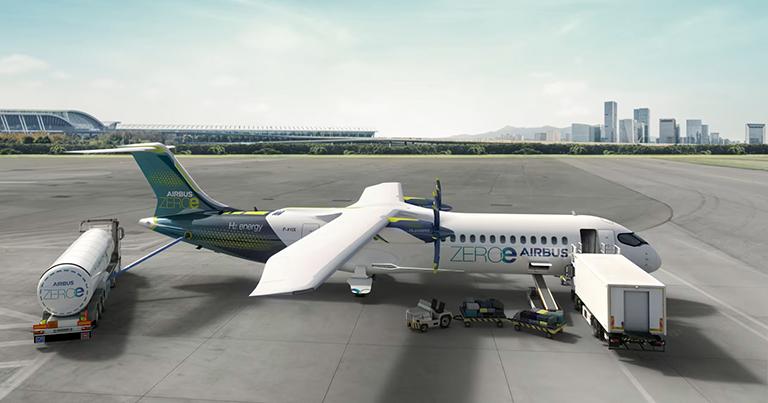
Swedavia, Airbus, Avinor, SAS and Vattenfall have signed a Memorandum of Understanding (MoU) to work together to develop infrastructure for hydrogen-powered aviation at airports in Sweden and Norway. The goal of the collaboration is to, through a preliminary study on hydrogen, develop a framework and review the conditions for a possible rollout of hydrogen-powered aviation in both countries. The framework will cover the entire chain, from production and transport to storage and hydrogen refuelling at commercial airports. Test flights are already being conducted with hydrogen-powered aircraft and the goal is to achieve commercial viability for larger hydrogen aircraft by 2035.
The use of hydrogen to fuel the aviation industry of the future, together with biofuel and battery-electric aircraft, is expected to contribute to a significant reduction in the total carbon dioxide emissions from aviation. The feasibility study will run for one year with the possibility of extension and will include an investigation of how fast hydrogen-powered aviation can be developed. It will also look at scenarios for the number of movements with hydrogen-powered aircraft and the volume of hydrogen needed, which must be stored at the airports.
“We are very excited to be part of a larger partnership on the role of hydrogen in aviation together with Airbus, Avinor, SAS and Vattenfall,” said Jonas Abrahamsson, President and CEO, Swedavia. “Swedavia, Avinor and SAS already have established successful collaborations in fossil-free aviation, and it is therefore exciting that Airbus, with its extensive knowledge of hydrogen-powered aircraft through its ZeroE initiative, and Vattenfall, with its expertise in electricity and energy production, are joining us in a more in-depth collaboration. Hydrogen is expected to gradually become an increasing part of the aviation industry’s fuel mix in the future and will therefore have an increasing effect on the infrastructure and planning of our airports. This partnership is a major and important step towards fossil-free aviation in the Nordic region and will further strengthen Swedavia’s role as a front-runner in fossil-free aviation, while at the same time taking another important step in the transition within the aviation industry.”
The collaboration is built on the expertise and knowledge of all five partners, as well as a shared vision to move towards fossil-free aviation. The hope is that it will lead to an improved ecosystem for hydrogen aviation at Swedish and Norwegian airports by investigating what will be required in terms of operations, infrastructure, maintenance and refuelling needs in a northern region with long distances between population centres, where aviation plays an essential role in enabling work, commuting, travel and accessible infrastructure. By bringing together partners from the entire value chain with competencies that cover all aspects of aviation, the collaboration aims to create an overall picture of the conditions required to enable the transition to hydrogen-powered aviation.






